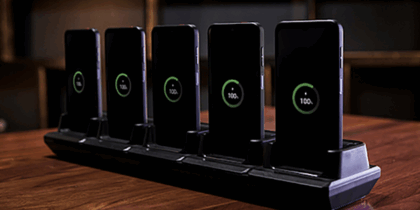The halls of government aren’t known for being a hotbed of innovation and modernity. However, a revolution in government business is underway, as legislators look to crowdsourcing innovation in order to help change the way the country works.
For a long time, red tape and regulations have limited the way the government could engage with the wider public to take advantage of the technological breakthroughs and trends that are happening every day across the country. Now, however, government departments are breaking free of these constraints, no longer intimidated by the fast pace of change taking place in the private sector and embracing the possibilities of crowdsourcing innovation.
The change has been brought about in part by a new section added to the America COMPETES Act, signed into law in 2011, which granted all agencies broad authority to conduct prize competitions in order to “spur innovation, solve tough problems and advance their core missions.” This has led to an explosion of such competitions, and by June 2016, the Challenge.gov website, set up as a central clearinghouse for these competitions, had featured more than 700 prize competitions and challenges from over 100 federal agencies, departments and bureaus — giving out over $80 million in prizes.
White House Pushes for More Transparency
The move to engage with the public through competitions is part of a wider initiative by the White House to become more open and transparent around the government’s use of technology. Recently the White House announced that it would be introducing a requirement for all federal agencies to make 20 percent of all custom software open source.
The benefits of this approach to business — and the business of government in particular — are obvious. Not only does it mean that the government can engage more directly with the people and companies that power the economy, it also saves a lot of money. For example, NASA estimates that if it had attempted to solve the challenge of sending large file attachments via email to the International Space Station in-house, it would have cost $193,000. Using the crowdsourcing approach, it cost NASA about $81,000.
A report looking at how the Federal Prize Authority was implemented in 2015 says the approach saw agencies “pay only for success and establish an ambitious goal without having to predict which team or approach is most likely to succeed,” which also allowed them to “reach beyond the ‘usual suspects’ to increase the number of solvers tackling a problem,” according to DigitalGov.
Just like enterprises across the globe, governments are increasingly looking to balance security and innovation, and by embracing the power of the crowd, they can do that much more effectively.
Learn about more ways that the availability of new technology is fostering increased government transparency and accountability.








